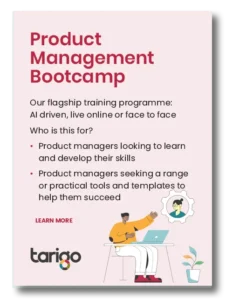
Why do products fail?
Product success in the marketplace is often a complex and multifaceted achievement, and there are numerous reasons why products can fail to achieve their intended success. In this article, we’ve described our top ten – the reasons we most often see leading to products failure:

1. Poor Market Fit
A product that doesn’t address a real need or pain point in the market is unlikely to gain traction. Failing to understand your target audience’s preferences and demands can result in a product that simply doesn’t resonate.
2. Inadequate Research
Lack of thorough market research can lead to incorrect assumptions about customer needs and market conditions. Not understanding the competitive landscape or target audience can result in misguided product development.
3. Weak Value Proposition
A product must offer a clear and compelling value proposition. If the benefits are not evident, or the product doesn’t adequately communicate its value to potential customers, it is less likely to succeed.
4. Poor User Experience
A subpar or confusing user experience can deter potential users. Ease of use and intuitive design are crucial factors in a product’s success, especially in today’s highly competitive market.

5. Insufficient Testing
Failing to test the product rigorously for functionality, quality, and user experience can result in a product with numerous bugs, defects, or usability issues that erode user confidence.
6. Inadequate Marketing
A great product can still fail if it’s not properly marketed. Ignoring marketing, branding, or promotion can leave a product unnoticed in a crowded market.
7. Timing
Entering the market too late or too early can impact a product’s success. Market timing is critical, and being ahead of or behind trends can affect a product’s adoption rate.
8. Lack of Adaptability
Failing to adapt to changing market conditions, customer feedback, or emerging technologies can lead to a product becoming obsolete or losing relevance.
9. Scalability and Technical Challenges
If a product can’t scale to meet increased demand or encounters significant technical issues, it can lead to customer dissatisfaction and failure to capture growth opportunities.
10. Pricing and Monetization Strategies
Product’s pricing and monetization strategy must align with its value, target audience, and market positioning. Inaccurate pricing or a lack of flexible pricing models can deter potential customers.
These are just some of the many reasons why products may fail to be successful. The interplay of factors contributing to success or failure can be complex, and it often requires a combination of careful planning, continuous market evaluation, adaptability, and a deep understanding of user needs and preferences to ensure a product’s success in the long term.
About Tarigo
We enable product managers to drive success.Established in 2003, Tarigo has built an enviable reputation for delivering high-quality training and consultancy solutions to product managers throughout Europe and the USA.
Our fresh approach to product management training has proven incredibly successful and our capability to adapt to clients’ training and consultancy needs has only helped to further this success.
